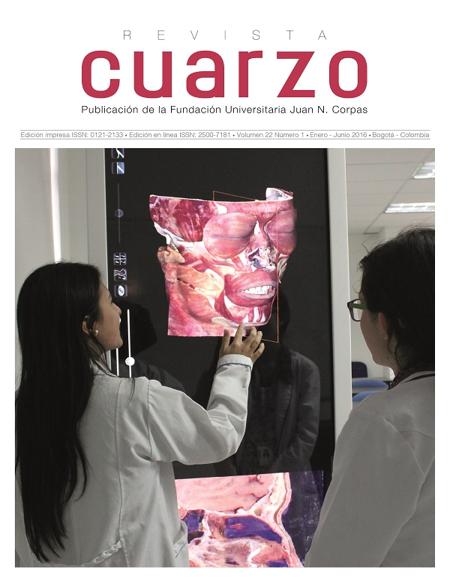Knagg J. Internet world users by language. Top 10 languages. Junio 2016 [consulta en línea 6 octubre 2016). Disponible en: http://www.internetworldstats.com/stats7.htm
Graddol D. English Next: Why global English may mean the endof “English as a Foreign Language. 1st ed. London: British Council.2006.
Høj P. Can we afford to be without multilinguism? [internet] Melbourne: LCNAU; 2009 Consultado 2011 noviembre 11]. Disponible en: http://www.lcnau.org/wpcontent/uploads/2011/10/Triebel2009.pd
Common European Framework for Languages: Learning, Teaching, Assessment. Strasbourg: Council for Cultural Cooperation Education Committee, Language Policy Division; 2001.
Victorian School of Languages. Victoria State Government. Languages Provision in Victorian Government Schools, 2015. State of Victoria (Department of Education and Training). Melbourne; 2016.
Clyne M. Diverse language skills will open the world to Australians, The Age [internet]. 2008. [Consultado 2015 enero 20]. Disponible en: https://www.scribd.com/document/14352377/ Diverse-Language-Skills-Will-Open-the-World-to-Australians
Clyne M. Blueprint for a monolingual and parochial Australia? Languages Education in Australia [internet]. Australia; 2007 [Consultado 2017 enero 30]. Disponible en: http://www.languageseducation.com/clyne070809.pdf
Krashen S, Terrell T. The Natural approach: Language acquisition in the classroom. San Francisco: The Alemany Press; 1983.
Ellis R. Methodology in Task-Based Language Teaching [internet]. 2014 [Consultado 2016 octubre 15]. Disponible en: http://camelotproject.eu/rod-ellis/)
Ellis R. Task-based Language Teaching and Learning. 2nd ed.UK: Oxford; 2003.
Oxford R. Task-Based Language Teaching and Learning: an overview. Asian EFL Journal. 2006; 8(3):1-20.
Nunan D. Designing tasks for the communicative classroom. 1 a ed. Cambridge: Cambridge University Press; 1989.
Skehan P, Willis EJ, Willis D. Second language acquisition research and task-based instruction. En: Willis J, Willis D, editors. Challenge and Change in Language Teaching. Heinemann; 1996.p. 17-30. ¿Estamos preparados para trascender las fronteras del monolingüismo? Florez M. 49
Crookes G, Gass S. Tasks in a pedagogical context: Integrating theory and practice. Clevedon, UK: Multilingual Matters; 1993.
Prabhu NS. Second language pedagogy. 1a ed. Oxford: Oxford University Press; 1987.
Long MH. A role for instruction in second language acquisition: Task-based language training. En Hyltenstam K, Pienemann, editores. Modeling and assessing second language acquisition. 18a Ed. Clevedon, UK: Multilingual Matters; 1985. p. 77-100.
Warschauer M. Computer-mediated collaborative learning: Theory and practice. The Modern Language Journal. 1997;81:470-481.
Florez M. Ver para entender. La comprensión de expresiones coloquiales a través del cine y la internet en el aprendizaje del español. USTA ediciones, Bogotá; 2011:76-78.
Florez M. Ver para entender. La comprensión de expresiones coloquiales a través del cine y la internet en el aprendizaje del español. USTA ediciones, Bogotá; 2011:76-78.
Kearsley G, Shneiderman B. Engagement Theory: a framework for technology-based teaching and learning [internet]. 1999 [Consultado 2016 octubre 7]. Disponible en:http://home.sprynet. com/~gkearsley/engage.htm
Breen M. Learner contributions to task design. In C. Candlin & D. Murphy (Eds.) Language learning tasks; 1987.
Candlin C. Toward task-based learning. En: C. Candlin & D.Murphy. Language learning Tasks. Englewood Cliffs, NJ: Prentice Hall; 1987.
Wadsworth BJ. Piaget’s theory of cognitive and affective development: Foundations of constructivism. Longman Publishing;2004.
Williams M, Burden R. Psicología para profesores de idiomas. Enfoque del constructivismo social. Madrid: Cambridge University Press; 1999.
Williams M, Burden R. Psicología para profesores de idiomas. Enfoque del constructivismo social. Madrid: Cambridge University Press; 1999.
Florez M, Constanzo E. La interculturalidad en el currículo australiano. En IV Congreso Internacional La enseñanza del español en un mundo intercultural [internet]. Santiago de Compostela (España):FIAPE; 2011 [Consultado 2015 octubre 14]. Disponible en: http://www.mecd.gob.es/dctm/redele/MaterialRedEle/Numeros%20Especiales/2012_ESP_13_IVCongreso%20FIAPE/2012_ESP_13_12FlorezInzunza2.pdf?documentId=0901e72b812ef9df
Bygate M, Skehan P, Swain M. Researching Pedagogic Tasks: Second language learning, teaching and testing. London, UK: Longman;2001.
Bygate M, Skehan P, Swain M. Researching Pedagogic Tasks: Second language learning, teaching and testing. London, UK: Longman;2001
Deardorff D.K. Implementing intercultural competence assessment. En: the SAGE Handbook of Intercultural Competence, Deardorff D. ed. Thousand Oaks, CA: Sage. 2009. p. 477-491.
Deardorff D.K. Intercultural Competence in Foreign Language Classrooms: A Framework and Implications for Educators. En Witte & Harden’s Intercultural Competence: Concepts, Challenges, Evaluations, ISFLL. Peter Lang International Academic Publishers; 2011. Vol. 10.
Deardorff D. Theory refl ections: Intercultural Competence Framework/model. 2006; [Consultado 2016 octubre 15]. Disponible en: http://www.nafsa.org/_/File/_/theory_connections_intercultural_competence.pdf
Wierzbicka A. Cross-cultural pragmatics: the semantics of human interaction. New York: Mouton de Gruyter; 1991.
Liddicoat A, Scarino A, Papa demetre L, Kohler M. Report on intercultural language learning. [Internet]. Canberra, Australia: Commonwealth Department of Education, Science and Training; 2003. [Consultado 2016 octubre 15] Disponible en: http://www1. curriculum.edu.au/nalsas/pdf/intercultural.pdf
Gudykunst W, Kim Y. Communicating with strangers. 1st ed. Nueva York: McGraw Hill; 1992.
United Nations Educational Scientifi c and Cultural Organization. Intercultural competence, Conceptual and operational framework. Paris: UNESCO; 2013.
Lopez, LE. Ciudadanía, interculturalidad y educación. Perspectivas latinoamericanas. 1era ed. Bolivia: Plural editores; 2009.









